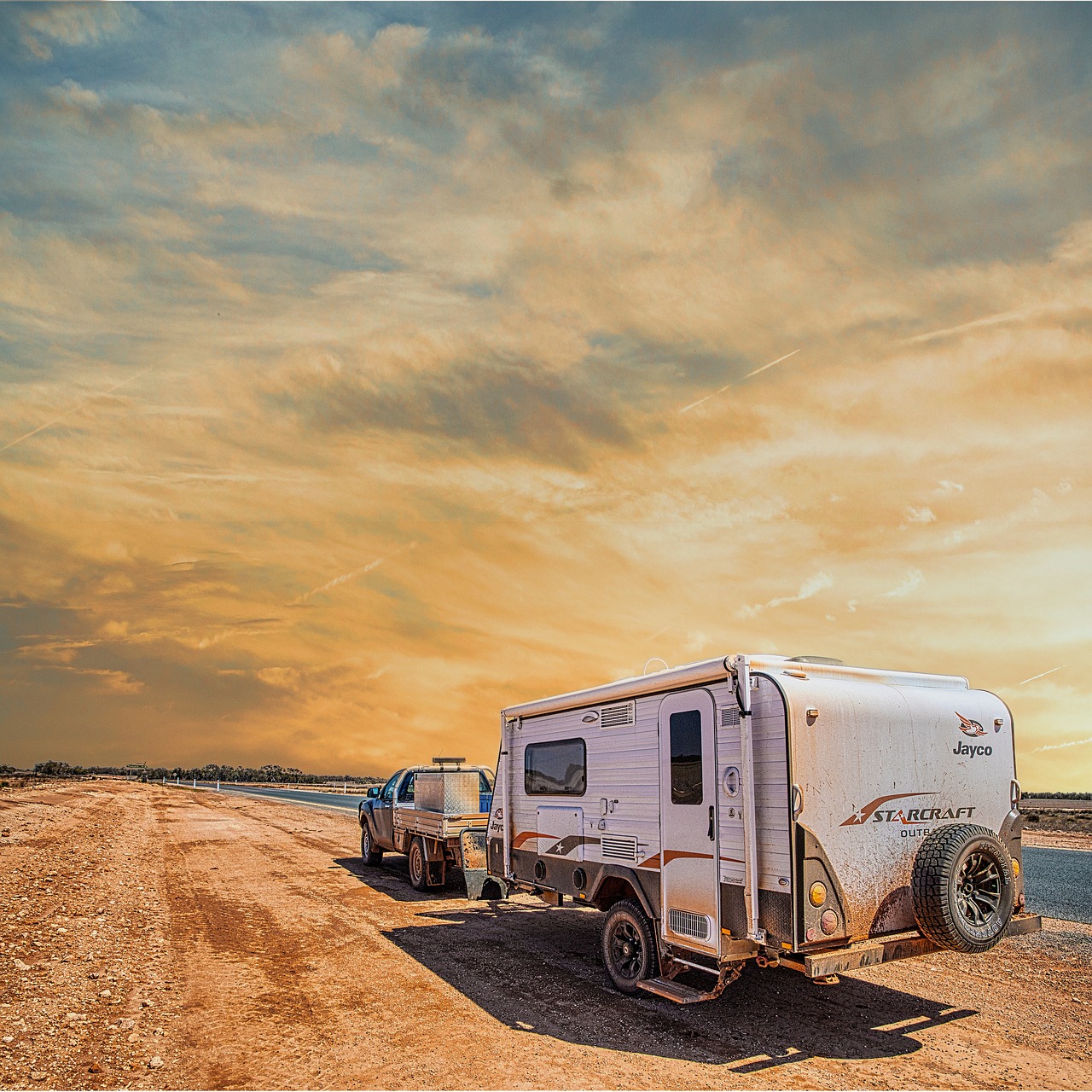Coatings for caravans and campers: never polish again
Nano coatings, ceramic coatings, glass coatings: they are 'hot' in the automotive world when it comes to protecting the valuable paint systems of sports cars, for example. These coatings are also on the rise in the world of campers and caravans. But: what is it and how does it actually work?
Nano, ceramic, glass – these terms are used interchangeably in the world of car detailing. Specialized cleaning companies provide Porsches, Lamborghinis and Ferraris with a rock-hard, glossy coating that makes the paintwork so smooth that dirt no longer adheres to it and causes water droplets to bead directly from the paint. The magic agent in these coatings is silicon dioxide (SiO2), a product that is also used in the manufacture of ceramics and glass. Nanotechnology improves these properties and ensures that the coating adheres well to – or rather in – the surface. That is why the terms nanocoatings, ceramic and glass coatings are used interchangeably.

At the molecular level
'Nano' comes from the Latin word 'nanus' (roughly translated 'dwarf'). It is a unit of measurement: a nanometer is one millionth of a millimeter. To get an idea: a human hair is 80.000 nanometers thick. Due to their bizarrely small dimensions, nanoparticles have a strong impregnating effect. They penetrate deep into surfaces and attach to the material at molecular level. Nanotechnology changes the structure and adds properties.
Porous surfaces are sealed with nanocoatings and made so smooth that water, oil or dirt can no longer adhere to those surfaces, making them easy to clean. On self-cleaning windows of skyscrapers, for example, and on solar panels that therefore continue to perform optimally.
Nanotechnology is also applied to walls and statues to protect them against graffiti and in the sailing world nano coatings are used to make racing ships sail faster and to make sails water-repellent (and therefore lighter). The use of nanocoatings also makes surfaces UV-resistant, so that they are hardly sensitive to discoloration or weathering due to weather influences. This also makes them ideal for the automotive industry. However, applying a nano coating is not a job for the do-it-yourselfer, partly because the surfaces to be treated must be spotlessly clean. Otherwise, nanocoating is counterproductive: you trap the contamination deep into the pores of the material. And that pollution? Then it never goes out again.

Also for caravans and campers
Nano coatings can also be applied to new and used caravans and campers and this is happening more and more often. Including at Duijndam Caravans and Campers, in Delft. It is important to know that the paint layer on recreational vehicles is many times thinner than on cars. That is why applying the coating – and certainly the preliminary stage – is a job for the professional. Duijndam Delft is therefore working with Carmotec, a specialized 'car detailing' company from Yerseke (Zeeland) that works with Carpro nanocoatings. Most brands that produce nano coatings use one and the same coating for various surfaces.
Carpro, on the other hand, supplies nano coatings for various applications: for the paint layer of caravans and campers, but also for the striping that caravan and camper brands apply to their products. Carpro has also developed special coatings for the (plastic) windows of campers and caravans, for the windscreen of campers, for alloy wheels and plastic parts such as the (unpainted) mirrors of bus campers.

Also on location
To map out the different steps, we follow the treatment of an integral camper at Carmotec Detailing in Zeeland. The company has its own business premises but also works on location, such as at Duijndam Delft. The most important step is to thoroughly clean the camper. This is done in a number of steps, in which stubborn dirt residues and limescale deposits are also tackled with special cleaning products. Small imperfections and scratches are removed by 'claying' the surface and then the camper is polished, sometimes up to three times, depending on the condition of the paint.
After another thorough cleaning, the camper is completely degreased and only then does the nano treatment follow. The camper has now been completely washed, hosed down and polished seven to nine times. During the nano treatment, the coating is rubbed into the paint by hand, always in small sections. The coating disappears into the surface and when the paint is saturated, the coating is rubbed out with a special cloth. The coating can then harden and the paint is completely sealed. This treatment takes place on all those different surfaces: paint, plastic, stickers, wheels and windows, but also on the locking buttons of the service hatches, for example.
The end result is a camper that shines harder than in the showroom and where raindrops will bead off your camper for years to come. If we put it to the test, we see that we can easily remove dirt with a water hose and for insects on the windscreen of the camper, a damp cloth is sufficient. An additional advantage is that the camper never needs to be waxed again and the UV protection ensures that the camper retains its original shine for years to come. With a biannual wash, you then treat the camper yourself with a special maintenance shampoo that activates the nano coating again and again. This means that the protective layer continues to work for years to come. Carpro gives a 3-year warranty, but with the correct after-treatment the protective effect should remain active for at least 6 years or even longer.

Windows, wheels and stickers
The Carpro window coating makes the windows extremely smooth, so that raindrops automatically fly off the windows from 60 km/h - making the use of windshield wipers almost no longer necessary. Alloy wheels are treated after which brake dust, among other things, hardly adheres to the wheels. This makes the wheels much easier to clean. Wrapped and matte surfaces – such as the striping of campers and caravans – are also optimally protected against UV radiation and will therefore remain colorfast for much longer. Untreated plastic surfaces are given a coating that prevents them from becoming dull and matt. There are also nano coatings for carpet, upholstery and leather seats.
Costs
Due to the labor-intensive process, nano treatment is not cheap - calculate approximately € 7 for a new semi-integrated camper of 1.799 meters and approximately € 6 for a bus camper of 1.495 meters. For that amount, all surfaces of the camper are completely cleaned several times, polished and then treated with the Carpro Professional nano coatings. This layer offers optimal protection to the paint against UV radiation, pollution, flash rust, brake dust and insects for at least 3 to 6 years. For smaller caravans (body length 4 meters), a nano treatment is possible from € 1.149.
For more information, go to: www.carmotec.nl
Wide range
Still looking for a new camper or caravan? We have a large offer that you can choose from from dealers and private individuals. Or would you rather look at a few first camper testing of caravan testing?




